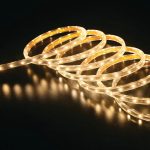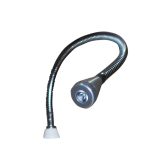Saving the Environment: How LED Light Bulbs Play a Vital Role

The environment is facing numerous challenges today, and one of the most significant problems is the degradation of our natural resources. As global temperatures continue to rise, the need for sustainable practices has become more urgent than ever before. Many industries have recognized the need to reduce their carbon footprint, and one of the most effective ways to do so is by adopting eco-friendly technologies. In this regard, LED light bulbs have emerged as a game-changer in the lighting industry. Not only do they significantly reduce energy consumption, but they also have a longer lifespan than traditional light bulbs. LED (Light Emitting Diode) technology has been around for over 50 years, but it has only recently gained popularity as a viable lighting option. These bulbs are incredibly energy-efficient and produce less heat than traditional bulbs, which means they help reduce your carbon footprint while lowering your electricity bills. LED bulbs have a lifespan of up to 25,000 hours, which means they last longer than traditional bulbs and require less frequent replacement. With the advancement of technology, LED bulbs have also become more versatile, making them suitable for use in various settings, including homes, offices, and outdoor spaces. In this article, we will explore how LED light bulbs are helping to save the environment and why they are an essential part of any eco-friendly lighting plan.
LED light bulbs are a type of lighting technology that utilizes light-emitting diodes to produce illumination. Unlike traditional incandescent light bulbs, which generate light by heating a wire filament until it glows, LED bulbs rely on a semiconductor to convert electrical energy into photons. This process is much more energy-efficient than incandescent lighting, as it generates less heat and requires less electricity to operate. Additionally, LED bulbs last much longer than traditional bulbs, and they do not contain hazardous materials like mercury, which can harm the environment. As a result, LED bulbs are becoming increasingly popular as a way to reduce energy consumption and lower carbon emissions.
Saving the environment is crucial for our well-being and the survival of our planet. The environment provides us with essential resources like clean air, water, and food. It also offers us a beautiful and diverse natural world that we can enjoy and benefit from. However, our actions have caused significant harm to the environment, including pollution, deforestation, and the depletion of natural resources. To reverse this damage, we must take steps to protect and conserve the environment. Adopting energy-efficient technologies like LED light bulbs can help reduce our carbon footprint, cut down on energy consumption, and ultimately preserve the environment for future generations. It is our responsibility to take action now and safeguard our planet’s health and sustainability.
How LED Light Bulbs Help Save the Environment
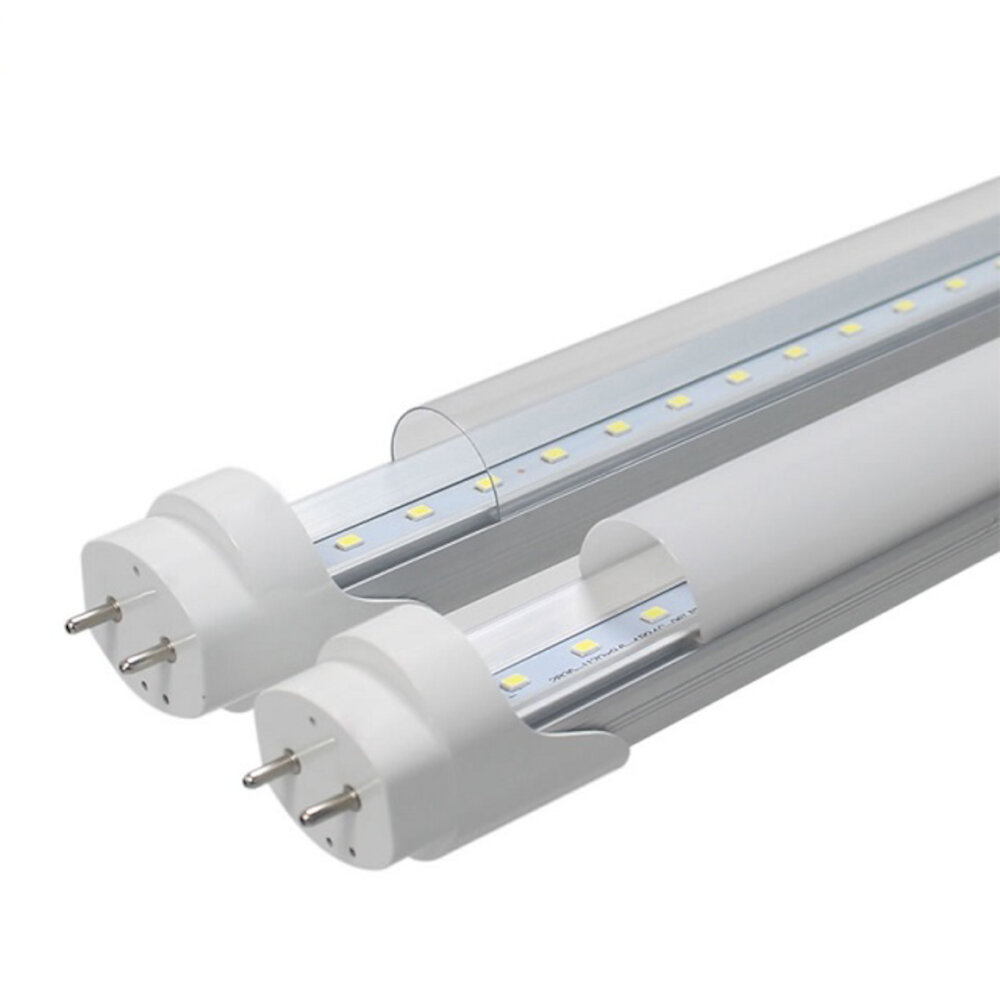
LED light bulbs are a highly efficient and eco-friendly lighting solution that helps save the environment in several ways. Compared to traditional incandescent bulbs, LED bulbs use significantly less energy to produce the same amount of light. This means that they help reduce the demand for electricity, which in turn reduces the amount of greenhouse gases emitted by power plants. Additionally, LED bulbs have a much longer lifespan than incandescent bulbs, which means that they don’t need to be replaced as often. This reduces the amount of waste generated by discarded bulbs, and it also reduces the need for manufacturing new bulbs. Overall, LED bulbs are a clear winner when it comes to environmental friendliness, and they are an excellent choice for anyone who wants to reduce their carbon footprint. Another way that LED light bulbs help save the environment is by reducing the amount of heat that is generated during their operation. Traditional incandescent bulbs generate a significant amount of heat, which can contribute to the urban heat island effect in densely populated areas. LED bulbs, on the other hand, generate very little heat, which means that they don’t contribute to this problem. Additionally, LED bulbs don’t emit UV radiation, which can be harmful to humans and wildlife. This makes them a safer and more environmentally-friendly lighting solution overall. With all of these benefits, it’s clear that LED light bulbs are an important tool in the fight to save the environment. By choosing LED bulbs over traditional incandescent bulbs, you can make a big difference in reducing your carbon footprint and protecting the planet.
LED light bulbs are considered as one of the most energy-efficient lighting technologies available in the market today. They consume significantly less energy than traditional incandescent bulbs and can last up to 25 times longer. LED bulbs use semiconductors to convert electricity into light, resulting in a much lower energy wastage. They also emit less heat, making them safer and more efficient. The use of LED light bulbs can have a significant impact on the environment by reducing energy consumption and carbon emissions. By making the switch to LED lighting, individuals and businesses can not only save on energy bills but also contribute to a more sustainable future.
Reducing our carbon footprint has become increasingly important in recent years as we face the consequences of climate change. One way to do this is by switching to LED light bulbs, which are much more energy-efficient than traditional incandescent bulbs. LED bulbs use up to 80% less energy, which means that they emit fewer greenhouse gases and contribute less to global warming. Not only are they more eco-friendly, but they also last much longer than traditional bulbs, reducing the amount of waste we produce. Switching to LED bulbs may seem like a small change, but it can have a significant impact on our environment and help us move towards a more sustainable future.
The longer lifespan of LED light bulbs is a significant advantage in the fight against environmental degradation. These bulbs have a lifespan that is 25 times longer than traditional incandescent bulbs, meaning fewer replacements are needed, leading to a reduction in the amount of waste generated. The durability of LED bulbs also means that they require less maintenance, reducing the amount of energy needed for upkeep. Additionally, the longer lifespan of LED bulbs translates to energy savings, as they use less electricity to produce the same amount of light. This not only reduces energy bills but also helps to lower carbon emissions, making LED bulbs a vital component in the battle against climate change.
Reducing waste has become a crucial aspect of environmental conservation, and LED light bulbs play a significant role in achieving this goal. Unlike traditional lighting systems, LED bulbs are highly energy-efficient and have a longer lifespan, reducing the amount of waste generated by frequent replacements. Additionally, LED bulbs do not contain harmful substances like mercury, which are hazardous to the environment and human health. Furthermore, LED light bulbs are recyclable and can be repurposed, further reducing the amount of waste that ends up in landfills. Overall, the adoption of LED light bulbs is a critical step towards reducing waste and conserving our environment.
Comparison to Traditional Light Bulbs

The advent of LED light bulbs has revolutionized the lighting industry, and they are rapidly replacing traditional incandescent bulbs, which have been around for over a century. LED bulbs are more energy-efficient and last longer than traditional bulbs, making them a cost-effective option for homeowners and businesses. Additionally, LED bulbs don’t contain harmful substances like mercury, which is present in traditional bulbs, making them more environmentally friendly. The traditional bulbs are known to emit heat and consume a lot of electricity, which has contributed significantly to global warming. In contrast, LED bulbs are cool to the touch and consume less energy, which reduces greenhouse gas emissions and helps to mitigate climate change. LED bulbs are also more versatile than traditional bulbs in terms of design and color options. They can be made in a variety of shapes and sizes, and they offer a wide range of color temperatures, from warm to cool. This versatility allows LED bulbs to be used in a wide array of settings, from homes to commercial spaces. Traditional bulbs, on the other hand, have limited design and color options, making them less flexible in terms of where they can be used. All in all, the advantages of LED bulbs over traditional bulbs are numerous, and they play a vital role in saving the environment. By using LED bulbs, we can reduce our carbon footprint and ensure that we leave a healthier planet for future generations.
When it comes to energy efficiency, LED light bulbs are the clear winner. They use up to 90% less energy than traditional incandescent bulbs, which means they are not only better for the environment, but also for your wallet. LED bulbs also last much longer than incandescent bulbs, with an average lifespan of 25,000 hours compared to just 1,000 hours for incandescent bulbs. This means you will have to replace your bulbs much less frequently, which reduces waste and saves you money in the long run. LED bulbs also emit less heat than incandescent bulbs, which can help reduce cooling costs in the summer months. Overall, LED light bulbs are a smart choice for anyone who wants to save energy and reduce their impact on the environment.
When comparing the environmental impact of LED light bulbs to traditional incandescent bulbs, the difference is significant. LED bulbs use up to 80% less energy than incandescent bulbs and last up to 25 times longer. This means fewer bulbs need to be produced and disposed of, reducing the amount of waste in landfills. Additionally, LED bulbs do not contain harmful chemicals like mercury, which can be harmful to both humans and the environment. LED bulbs also emit less heat, reducing the strain on air conditioning systems and ultimately lowering energy consumption. Overall, the use of LED bulbs plays a vital role in reducing our carbon footprint and preserving the environment for future generations.
When it comes to purchasing light bulbs, cost comparison is a crucial factor to consider. LED light bulbs may seem more expensive than traditional incandescent bulbs, but they are more energy-efficient and last longer, resulting in significant cost savings in the long run. While an incandescent bulb may last for only about 1,000 hours, an LED bulb can last up to 50,000 hours. Additionally, LED bulbs consume up to 80% less energy than incandescent bulbs, making them a more sustainable and eco-friendly option. Therefore, despite the initial higher cost, investing in LED light bulbs can help individuals and businesses save money on energy bills while reducing their carbon footprint.
Other Environmental Benefits of LED Light Bulbs
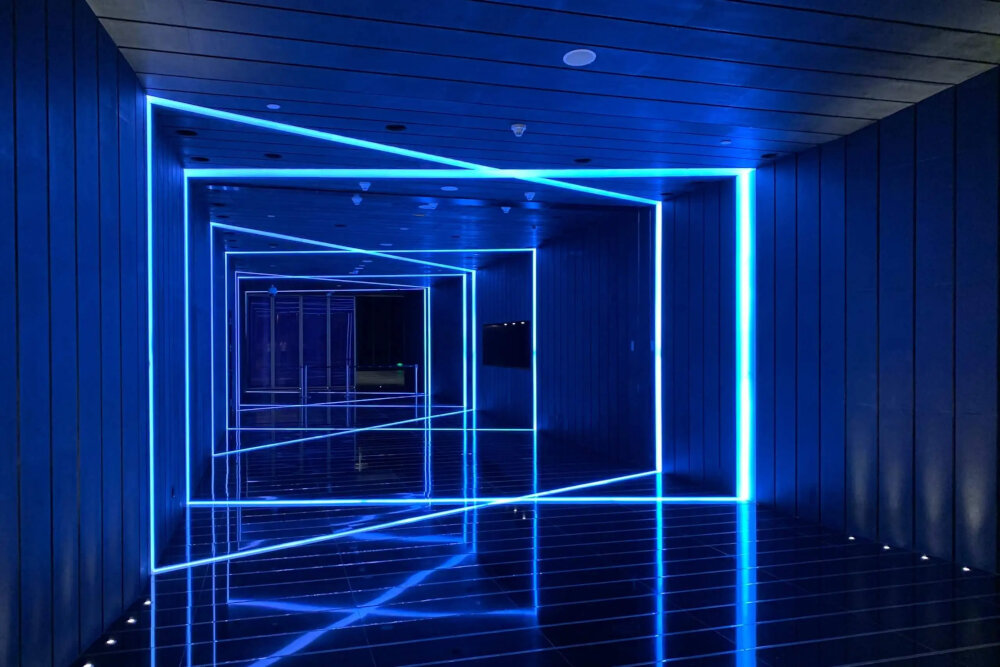
In addition to energy savings, LED light bulbs also offer several other environmental benefits. First and foremost, they have a longer lifespan than traditional incandescent bulbs, which means fewer bulbs end up in landfills. Since LEDs contain no toxic materials, they can also be disposed of safely and easily. This reduces the amount of hazardous waste in landfills and minimizes the risk of environmental contamination. Furthermore, LED bulbs emit less heat, reducing the need for air conditioning, which in turn reduces greenhouse gas emissions. This makes LED bulbs a more sustainable and eco-friendly option for lighting. Another environmental benefit of LED light bulbs is that they are highly recyclable. Unlike traditional incandescent bulbs, LED bulbs contain no glass or filament, which makes them easier to recycle. In fact, most LED bulbs are made from recyclable materials such as aluminum and plastic. This means that when a bulb reaches the end of its lifespan, it can be easily dismantled and its components recycled. This not only reduces the amount of waste in landfills but also conserves natural resources. By using LED light bulbs, we can reduce our environmental impact and help create a more sustainable future.
Reduced air pollution is a crucial factor in protecting the environment, and LED light bulbs play a vital role in achieving this goal. Unlike traditional incandescent bulbs, LEDs consume less energy and emit less heat, resulting in reduced greenhouse gas emissions. LED bulbs also do not contain harmful substances, such as mercury, that can pollute the air and water. Additionally, the long lifespan of LED bulbs means that fewer resources are needed to manufacture and dispose of them, further reducing their environmental impact. By switching to LED light bulbs, individuals and businesses can take a meaningful step towards reducing air pollution and protecting the planet for future generations.
Reducing water pollution is crucial for the protection and preservation of our environment. LED light bulbs play a vital role in this effort by reducing the amount of energy needed to light our homes, businesses, and public spaces. This reduction in energy consumption translates into a decrease in the amount of fossil fuels burned to produce electricity, which in turn leads to a decrease in harmful greenhouse gas emissions. Additionally, LED light bulbs do not contain toxic materials such as mercury, which can contaminate water sources when improperly disposed of. By choosing LED light bulbs, individuals and organizations can contribute to the reduction of water pollution and help protect our planet for future generations.
Reducing land pollution is one of the most crucial steps we can take towards preserving our environment. LED light bulbs have a significant role to play in this regard. Unlike traditional incandescent bulbs, LED bulbs do not contain toxic substances like mercury, which can seep into the ground and contaminate soil and water. Additionally, LED bulbs are energy-efficient, reducing the need for power plants that generate pollution from fossil fuels. By switching to LED bulbs, we can not only reduce land pollution but also cut down on greenhouse gas emissions and lower our carbon footprint. It is an easy and effective way to contribute to a cleaner and healthier planet.
Practical Tips for Switching to LED Light Bulbs
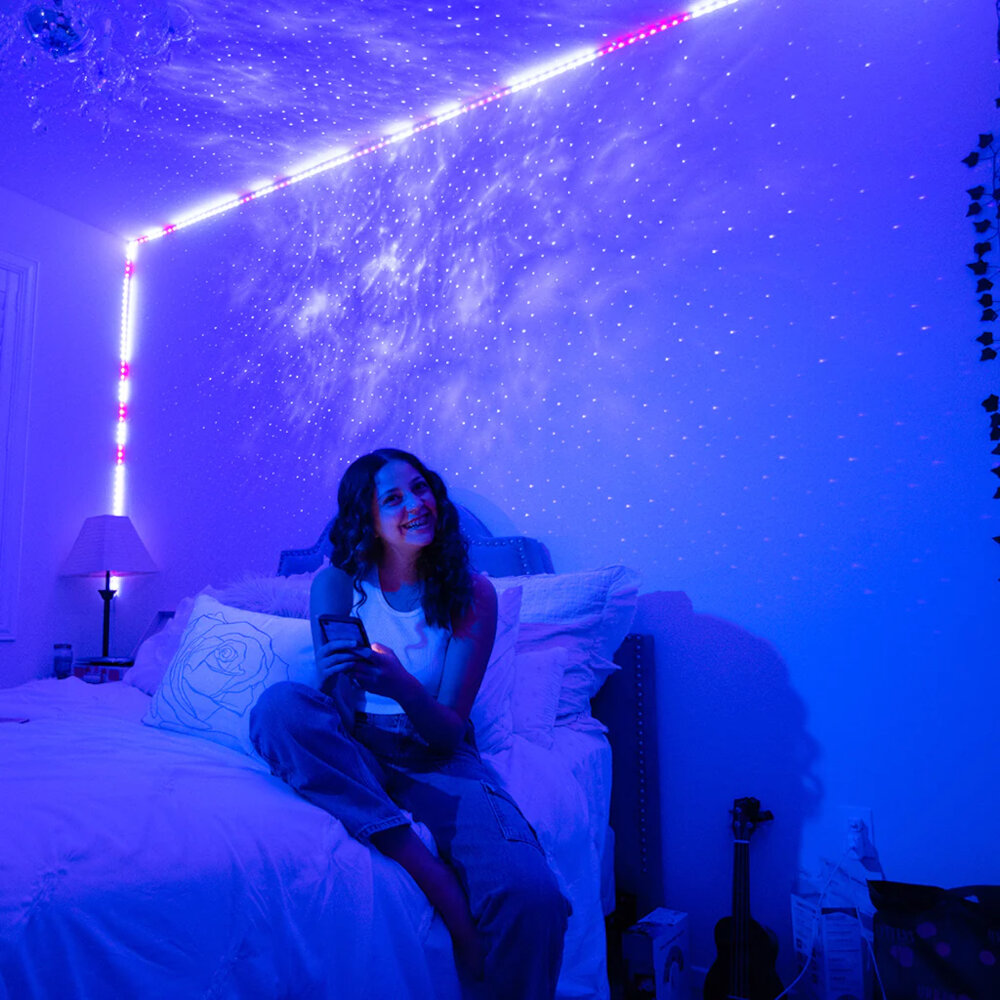
Switching to LED light bulbs is an effective way to reduce energy consumption and help protect the environment. LED bulbs are energy-efficient, long-lasting, and eco-friendly, making them the ideal choice for homeowners who want to save money on their electricity bills while also reducing their carbon footprint. To make the switch, there are a few practical tips to keep in mind. First, it’s important to choose the right LED bulb for your needs. Look for bulbs that provide the right amount of brightness for the space you’re lighting, and consider factors like color temperature and dimming capabilities. Additionally, make sure the bulb is compatible with your existing fixtures and wiring. Second, it’s a good idea to start small by replacing a few bulbs at a time rather than switching your entire home all at once. This will help you get a feel for the benefits of LED lighting and allow you to adjust your choices as needed. Finally, be sure to dispose of your old light bulbs properly, as they may contain hazardous materials. Many hardware stores and recycling centers offer safe disposal options for old bulbs.
Identifying the right LED light bulbs for your needs is essential if you want to make the most of this energy-efficient lighting technology. LED light bulbs come in a variety of shapes and sizes, and it’s important to choose the one that is right for your specific needs. For example, you may want to consider the brightness of the bulb, the color temperature, and the type of fixture it will be used in. Some LED bulbs are dimmable, while others are not, so it’s important to check the packaging or consult with a lighting expert before making a purchase. By taking the time to identify the right LED light bulbs, you can enjoy the many benefits of this technology while reducing your impact on the environment.
Proper disposal of traditional light bulbs is crucial to ensure that they do not harm the environment. These light bulbs contain various hazardous materials such as mercury, lead, and glass, which can pose a significant threat to the ecosystem if they are not disposed of properly. It is recommended to wrap the light bulbs with newspaper or any other material to prevent them from breaking during transportation. One should also look for local recycling centers or hazardous waste facilities that accept traditional light bulbs. By taking these simple steps, we can prevent these harmful materials from ending up in landfills and contributing to pollution. It is essential to realize that our small efforts can make a significant impact on saving the environment.
One of the most significant benefits of using LED light bulbs is the amount of savings it can bring to our energy bills. Unlike traditional incandescent bulbs, LED bulbs have a much lower wattage requirement, which means they use much less electricity to produce the same amount of light. This translates to a significant reduction in energy consumption, resulting in lower electricity bills. Additionally, LED bulbs have a much longer lifespan, which means they don’t need to be replaced as frequently as traditional bulbs, further cutting down on costs. By making the switch to LED bulbs, we not only become more environmentally conscious but also save money in the long run.
The environment is a precious gift that must be protected and conserved for future generations. It is our responsibility to take care of the earth and its resources, as they are finite and fragile. Saving the environment is crucial for the survival of all living creatures on this planet, including humans. By adopting sustainable practices and reducing our carbon footprint, we can slow down the negative impacts of climate change and preserve the natural beauty of our world. LED light bulbs are just one example of how we can make a positive impact on the environment. They are energy-efficient, long-lasting, and do not contain harmful chemicals, making them a sustainable alternative to traditional light bulbs. By switching to LED lights, we can reduce our energy consumption and lower greenhouse gas emissions, helping to protect the environment and create a brighter future for all.
LED light bulbs are one of the most energy-efficient and eco-friendly lighting options available today. They consume up to 75% less energy than traditional incandescent bulbs, which means they produce fewer greenhouse gas emissions and reduce the carbon footprint. LED bulbs also last longer than traditional bulbs, which means less waste in the form of used bulbs ending up in landfills. Moreover, they contain no toxic materials such as mercury, which can severely affect the environment. This makes them an environmentally friendly and sustainable choice for lighting homes and offices alike. By switching to LED bulbs, we can make a significant contribution to reducing our impact on the environment and protecting the planet for future generations.
Switching to LED light bulbs is a small change that can make a big difference. Not only do they use significantly less energy, but they also last longer than traditional incandescent bulbs. By using LED bulbs, you can reduce your carbon footprint and help to protect the environment. Additionally, LED bulbs can save you money in the long run, as they are more energy-efficient and have a longer lifespan. While the initial cost of LED bulbs may be higher, the savings on your energy bill and the reduced need for frequent replacements make them a wise investment. So, consider making the switch to LED bulbs today and do your part to save the planet while also saving money.
Conclusion

In conclusion, it is clear that LED light bulbs are a vital part of saving the environment. Not only do they use less energy than traditional light bulbs, but they also have a longer lifespan, reducing the amount of waste produced. Additionally, LED bulbs are free of toxic materials, making them a safer and more sustainable option. By making the switch to LED bulbs, we can reduce our carbon footprint and help preserve the planet for future generations. It is up to us to take action and make responsible choices that benefit both ourselves and the environment. Let us embrace the power of LED light bulbs and take a step towards a brighter and greener future.


